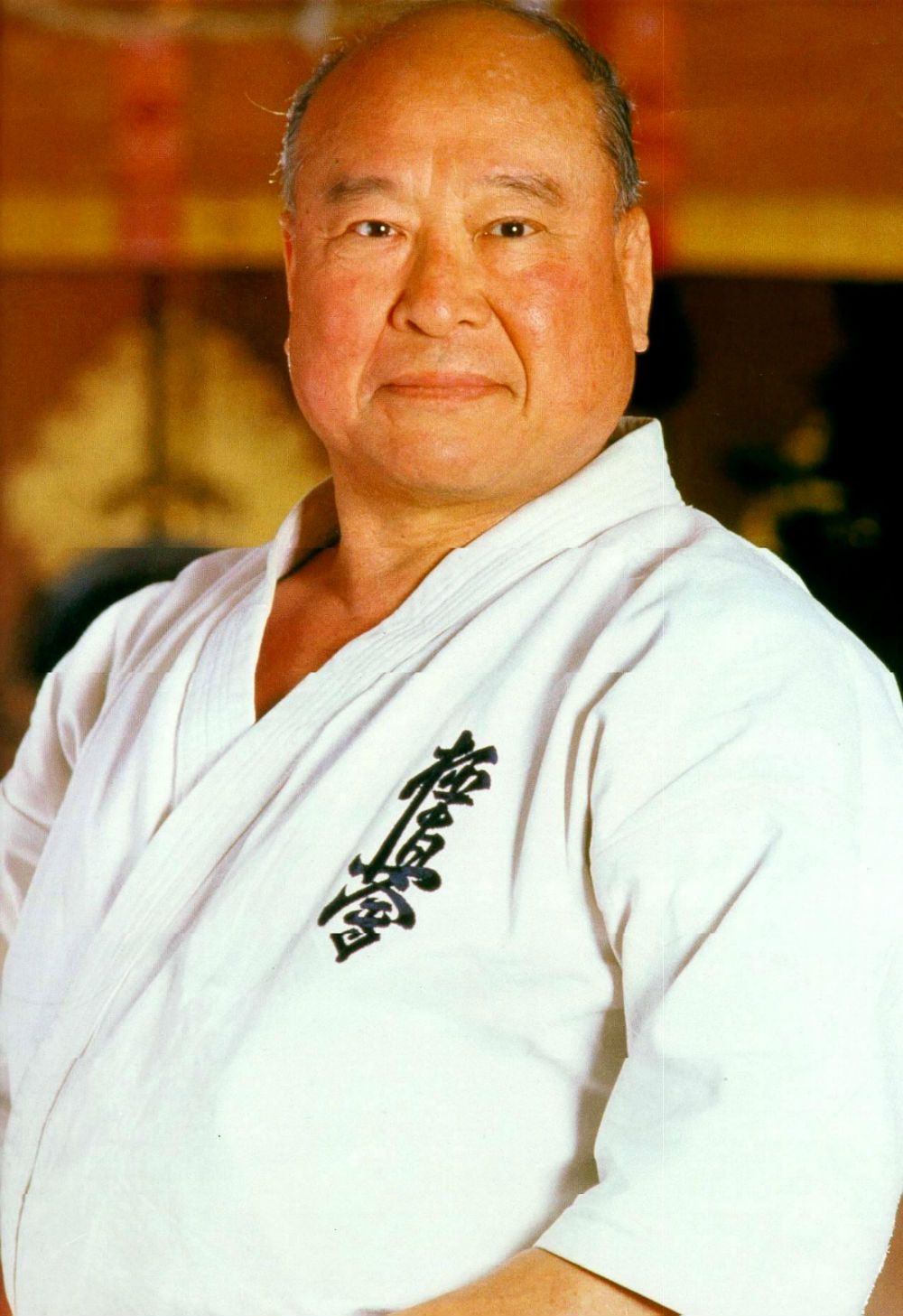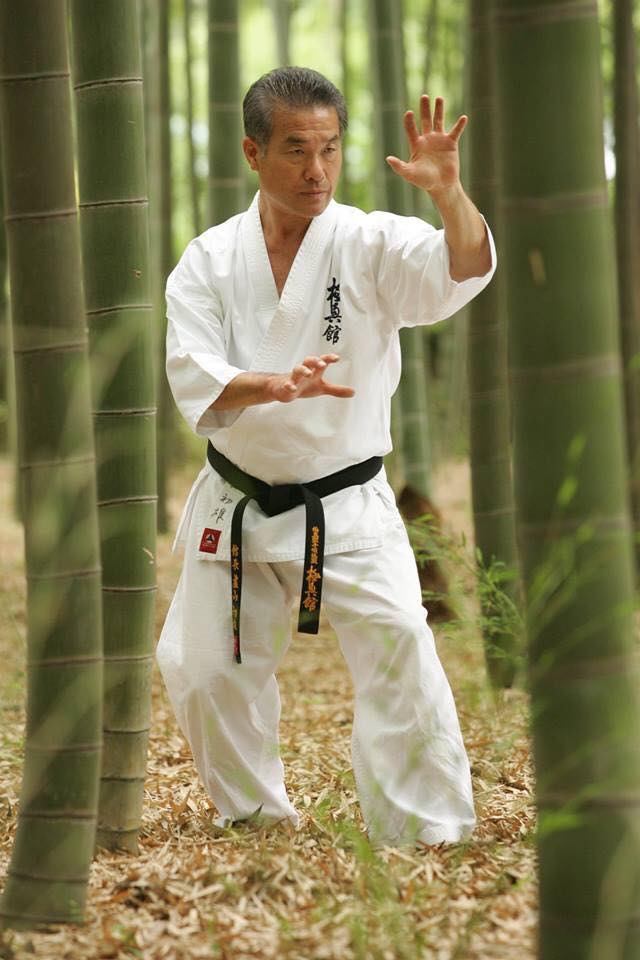History

Mas Oyama:
The Founder of Kyokushin Karate
Sosai (Great Master) Masutatsu Oyama was born in Korea in 1923 and became the founder of Japan’s most renowned and the world’s most widespread style of karate. From the age of 9, Mas Oyama learned Chinese Kenpo in Manchuria and followed into his teens by practicing Judo and boxing. Finally this led him to the practice of Okinawan karate, which ultimately served as the springboard for the creation of his own style, Kyokushin, or the “The Ultimate Truth.” By the time Mas Oyama was 20, he had received his 4th dan in Okinawan karate and though tireless study eventually attained a 4th dan in Judo as well.
Among Mas Oyama’s many accomplishments, he is perhaps best known for introducing tameshiwari or “stone breaking” into the practice of modern karate. Mas Oyama reasoned that through hard training he could condition his hands to be as powerful as a hammer. He began the practice of learning how to break boards, bricks and stones with his bare hands. This incredible power he then translated directly into his theory of fighting karate. Perhaps his greatest contribution to Japanese karate was the introduction and popularization of full-contact fighting karate.
At the time he won Japan’s largest tournament sponsored by Okinawa’s Shotokan karate, he was often penalized for fighting too hard. It was this experience, perhaps above all other influences that led to his creation of Kyokushin karate. After all, Mas Oyama believed, karate is a fighting art: Without taking it to its extreme one could never realize the true spiritual potential of karate.
Mas Oyama at the age of 23, retreated to a remote spot in the mountains with the ambition of training hard for three years. During this time he practiced by striking the few mountain trees around his cabin with his bare fists until those trees withered and died. He pressed twice his body weight 500 times per day, meditated under icy waterfalls, and fought in the night with the demons of bitter cold and isolation.
At the age of 27 Mas Oyama began his famous battles with bulls to prove his strength and make the world realize the true power of his karate. In one famous bout in front of a movie camera, he battled an angry bull on a beach for 45 minutes, both he and the bull refusing to be beaten. Finally the bull tired, and Mas Oyama sliced one of his horns off with his shuto, or “knife-hand strike.
Mas Oyama opened his first dojo in Ikebukuro, Tokyo at the age of 30, and called it “Oyama Dojo.” It was here that he took all that he had learned from the various styles that he’d practiced through the years, combined them with what he’d learned during the many thousands of hours of self-training and full-contact fighting, and created a new style of karate, which he called Kyokushin. In 1964, a new dojo in Ikebukuro became the world headquarters of the International Karate Organization, Kyokushinkaikan, which had over 12 million members in 133 countries at the time of his death.
Mas Oyama died of lung cancer in April of 1994, leaving to the world a legacy of the world’s strongest karate.
Kancho Hatsuo Royama
The Birth of Kyokushin-kan
In the decade following Mas Oyama’s death, the 12 million members International Karate Organization that he built has fragmented several times into several smaller organizations. In 2002, Hatsuo Royama, one of Mas Oyama’s early students from the Oyama Dojo era, along with many of his friends and followers, split from the then largest group of Sosai’s followers, the Kyokushinkaikan, and created a new organization called Kyokushin-Kan.
Kancho Hatsuo Royama had struggled for nearly a decade to support the young leader of the Kyokushinkaikan – his junior by 15 years – but in the end he was finally forced to accept the fact that the organization was no longer being led in a direction that would have met with the approval of his teacher, Mas Oyama. The late karate legend, Mas Oyama, said time and time again that the most important element of Kyokushin karate was the BUDO SPIRIT which encompasses elements of proper behavior, courtesy, the spirit of Osu, and good will towards man, in addition of course to fighting prowess. In 2002, Kancho Hatsuo Royama realized that this all-important element of Mas Oyama’s organization had been replaced by Mas Oyama’s initial successor with a hunger for money and that the “budo spirit” had been largely replaced by the “business spirit” in the inner chambers of the Kyokushin leadership.
Additionally, Kancho Royama had been forced to face the conclusion that Kyokushin’s fighting prowess was suffering under the new leadership as well. During Mas Oyama’s lifetime there was no question in the hearts and minds of the Japanese public that Kyokushin was the world’s strongest karate. Mas Oyama created a full-contact style of tournament competition in order to popularize budo karate. The reason Kyokushin fighters become the strongest under Mas Oyama’s teaching was that they trained for real-life application and then fought in the less-dangerous by comparison tournament-style environment. Kancho Royama had realized that the new leadership of Mas Oyama’s organization had abandoned Mas Oyama’s emphasis on real-world application. As a result, Kancho Royama broke with Kyokushinkaikan, and founded the rival Kyokushin-kan with the intention of returning Kyokushin Karate to the high level of esteem that it commanded during Mas Oyama’s lifetime.
One of Hatsuo Royama’s first steps upon forming Kyokushin-kan was the re-establishment of Mas Oyama’s Kyokushin Shogakukai foundation as prescribed in Mas Oyama’s will at the time of his death. Mas Oyama willed that his followers should re-establish the foundation that he’d created, and the failure on the side of the Kyokushinkaikan’s young leadership to achieve that goal had become yet another reason why Kancho Royama and others felt compelled to break away and follow a path that their teacher, Mas Oyama, would have celebrated.
Since Kyokushin-kan was founded, over 6000 Japanese karateka have flocked to support its cause in 50 branches composed of many dojos spread across Japan. Additionally, over 100 overseas branches have formally been established, including Canada, Russia, South Africa, Korea, the United States and nearly every European and Asian countries. Also, Kyokushin-kan has sponsored annual all-Japan and all-Japan weight category tournaments held in Saitama, north of Tokyo, and all Kyokushin-kan members eagerly celebrated Kyokushin-kan’s 1st World Open Karate Tournament held in Moscow in September 2005.


